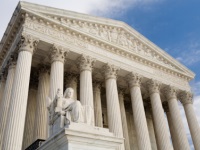
In Gabelli v. SEC, a unanimous Supreme Court held that the statute of limitations for “penalty” claims in governmental enforcement actions begins to run from the date of the underlying violation of the law, not when the government discovers or reasonably should have discovered the misconduct. Gabelli has important implications for the Securities and Exchange Commission (“SEC”) and all governmental agencies because it limits the sanctions available to the agency for conduct that occurred more than five years before it commences a civil enforcement action. Opinion.
Gabelli involved the application of 28 U.S.C. § 2462, which provides that “an action, suit or proceeding for the enforcement of any civil fine, penalty or forfeiture … shall not be entertained unless commenced within five years from the date when the claim first accrued[.]” In 2008, the SEC sought civil penalties from Mark Gabelli, a mutual fund portfolio manager, for alleged violations of the Investment Advisers Act in connection with alleged market timing issues. Gabelli successfully moved to dismiss the penalty claims as time-barred under Section 2462 because the complaint was filed almost six years after the alleged misconduct. On appeal, the Second Circuit reversed, reasoning that in cases of fraud the statute of limitations does not begin to run until the SEC discovered (or reasonably could have discovered) the wrongful acts. The Supreme Court disagreed, holding that “a claim based on fraud accrues—and the five-year clock begins to tick—when a defendant’s allegedly fraudulent conduct occurs.”
The decision is significant for at least three reasons. First, Section 2462 applies to both district court litigation and agency enforcement proceedings. Defendants therefore can assert the statute of limitations defense both in civil litigation and in administrative proceedings to impose, for example, a broker-dealer associational bar. There remains an open question, however, about whether Section 2462’s limitations period applies to disciplinary sanctions imposed by self-regulatory organizations (“SRO”), particularly where they are subject to SEC review (under 15 U.S.C. § 78s(d)(2), for example). Gabelli therefore will force the SEC to move more quickly in bringing enforcement actions and administrative proceedings and may prompt a shift toward SRO enforcement for older violations.
Second, the Supreme Court explicitly states that it is not addressing whether and how the equitable tolling doctrine might apply in fraud cases. Nevertheless, many of the impediments to application of a discovery rule, such as the difficulty in determining when the government should have known pertinent facts, arguably could apply to equitable tolling as well. Accordingly, the application of equitable tolling to Section 2462 could become a new battleground in SEC civil enforcement actions.
Lastly, the Court did not address the question of what constitutes a civil penalty, “pecuniary or otherwise.” On February 14, 2013, the SEC filed a petition for writ of certiorari in the Supreme Court in SEC v. Bartek, et al. The Bartek petition raises the same accrual question presented in Gabelli. Although the petition also presents the question whether director and officer bars and injunctive relief are “penalties” for purposes of Section 2462, the SEC only asks the Supreme Court to hold and dispose of the Bartek petition as appropriate in light of the ruling in Gabelli. Gabelli does not address the applicability of Section 2462 to those forms of relief. While unclear at this point what the Supreme Court will do, the fact of the SEC’s petition suggests that the SEC may seek to limit Gabelli’s impact in future enforcement actions.
We previously covered the Gabelli case in blog posts dated January 15, 2013 and September 25, 2012.

